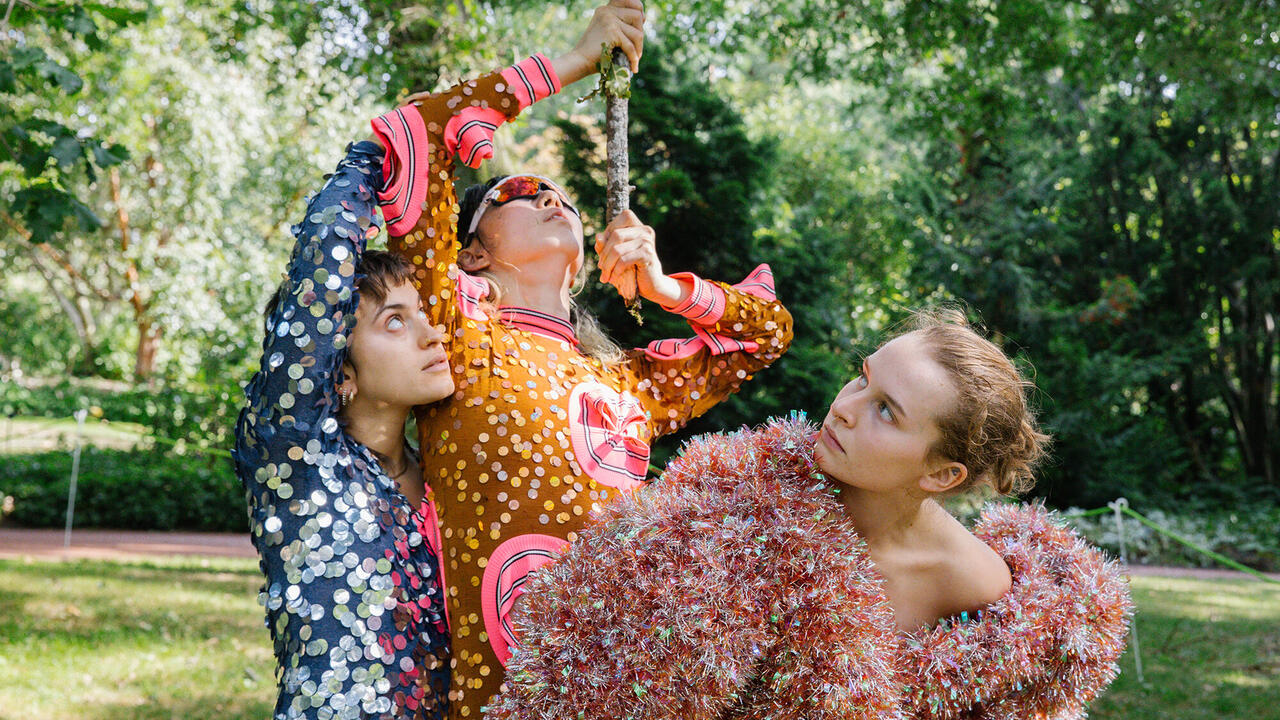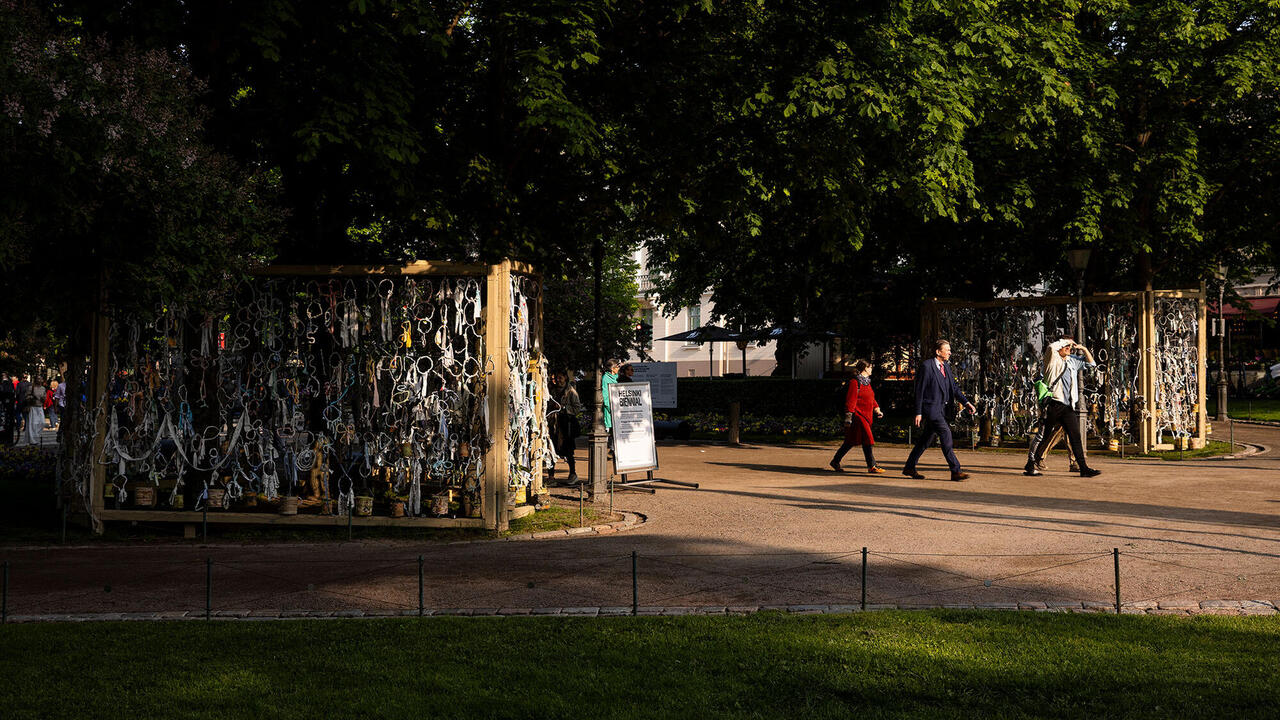Balthus / René Magritte

Perhaps the most troubling thing in writing about the Polish-French painter Balthus is his fixation upon ‘adolescence’. The artist’s probing portraits of troubled youth almost invariably home in upon young girls, their nubile anatomy as exposed as their callow pathos, by turns shy and defiant. The nature of this fixation was on full display in the Metropolitan Museum of Art’s exhibition ‘Cats and Girls – Paintings and Provocations’, from mid-1930s likenesses steeped in dingy colours and set in stark interiors, to the more airy, languid scenes of later decades. Even in foregrounding the artist’s eponymous provocations, curator Sabine Rewald seemed eager to dodge the thorny question of erotic impropriety in favour of a discreet, chronologically ordered survey. In several instances, however, the wall texts seemed almost to beg hilarity in the prudishness of their euphemisms. The poses of the painter’s eleven-year-old neighbour and frequent subject, Thérèse Blanchard, might, one blurb suggested, ‘be erotically suggestive to some viewers’, while the 17-year-old Sheila Pickering was noted to have ‘delighted her friend Balthus with her exuberance and
mischievousness’. Next to Thérèse Dreaming (1938) – depicting the artist’s pet model daydreaming, arms raised and panties exposed while a nearby cat laps milk from a saucer – the wall text noted ‘a touch of suggestiveness [sic!]’ Perhaps nowhere else were the exhibition’s headlining subjects more emphatically elided than in this image, its brash apposition of crotch and cat conjuring up the French slang for female anatomy (la chatte, mirrored in the English ‘pussy’).
To be sure, feline identity proves somewhat fungible in Balthus’s hands. The eponymous, half-human Cat of La Mediterranée (1949), a whimsical seascape painted for the interior of the Mediterranée restaurant in Paris, is said to be a self-portrait, just as the earlier King of the Cats (1935) stakes its proud self-image upon a feline genealogy. As the show’s premise would suggest, cats are indeed the most consistent trope (aside from the female form) in Balthus’s career, beginning with his series of 40 narrative drawings featuring his childhood cat, completed when he was just eleven years old. Titled Mitsou and displayed in their entirety, the plates reveal a precocious drawing talent – one that impressed the German poet Rainer Maria Rilke, who aided in the images’ publication and penned a foreword to their first edition in 1921. Equally illuminating with regard to the evolution of Balthus’s oeuvre were the large number of later works on display, which generally receive shorter shrift in favour of his 1930s corpus. The 1940s witnessed a less brooding (if no less moody) tenor of images as the painter worked in Savoie and Switzerland, his compositions marked increasingly by the marmoreal anatomies of Piero della Francesca rather than the gritty earth tones of Gustave Courbet. Crisp and limpid in their use of line, works like The Living Room (1942) seem belatedly to have absorbed the look of interwar Neue Sachlichkeit, characterized by visual clarity and an air of moral confusion in equal measure. The almost pastel buoyancy of several 1950s images featuring open windows gives way, by the decade’s end, to the gravelly pink and grey of The Moth (1959-60), its casein tempera producing a gritty surface that seems glimpsed through the haze of dream or memory. A nude woman in profile is flattened against the shallow space of a lamp-lit bedroom; the almost decorative surface conjures up everything from the legacy of synthetic cubism to the interiors of Édouard Vuillard. It is, however, his temperamental images of the 1930s (including works like The Street and The Mountain, outside of this show’s purview) for which Balthus remains most relevant and influential. It is also the imagery of this period which most plainly evokes his legendary vow to ‘do surrealism after Courbet’, a synthesis that finds its echo in the painter’s abiding, ever-present girls: juvenile and elegant, recusant and graceful.
The sight of a woman’s sprawled, dead body in Balthus’s The Victim (1939–46) found an echo across town in the large canvas that opened MoMA’s René Magritte retrospective, ‘Magritte: The Mystery of the Ordinary, 1926–1938’. The Menaced Assassin (1927), depicts a woman’s mutilated body lying next to her proverbial murderer, stalked in turn by offstage assassins. If Balthus’s style is only vaguely surrealist in sensibility, he shared the movement’s most salient fetish – one obsessively rehearsed in Magritte’s deadpan hallucinations. In fact, it is Magritte’s I Do Not See the [Woman] Hidden in the Forest (1929) – a female nude around which are clustered photographic snapshots of the (all male) surrealist cohort, their eyes closed in contemplation – that remains one of surrealism’s most enduring icons.
If Magritte is generally spared the indictments of misogyny perennially ascribed to the movement’s brasher members, his art contributed no less to the notion of woman as an object for plastic, erotic and semiotic projection. Whether painted into life by the artist’s Pygmalion-like self-portrait (Attempting the Impossible, 1928); reconfigured into a fantastic anatomy wherein the sex organs substitute for a face (The Rape, 1934); squeezed into a frame that matches the swell of hips (Representation, 1937); or conflated with the very male form that seeks to violate it (The Titanic Days, 1928), the female body proves as much of a raw material in Magritte’s canvases as oil paint.
The exhibition skipped over the artist’s earlier, cubist-derived experiments, focusing upon a narrower slice of Magritte’s career, one coinciding with the pinnacle of his surrealist affiliation as the movement’s primary Belgian representative. Comprising nearly all of his best-known works, a dynamic hanging spared the images any sense of perfunctory assembly. This is no easy task. Perhaps no other early 20th-century painter’s work has been more insidiously absorbed into the bloodstream of consumer culture than Magritte’s. The poker-faced mix of disorienting conjunctions and seamless surfaces in the artist’s imagery provided advertising with a redoubtable bag of tricks, well in advance of Photoshop. If Magritte’s imagery staked out the mystery lurking in the ordinary corners of modernity, a certain banality now dogs some of his visual feats in light of their toothless repetition. As David Sylvester pointed out long ago, Magritte’s images grace the covers of more fiction books than those of any other modernist artist.
Of course, the painter himself drew extensively and unabashedly from popular culture – something The Menaced Assassin makes plain in its nod to the contemporary roman policier and cinema alike. If it is to Giorgio de Chirico’s precedent that Magritte owes his shallow, stage-like spaces and incongruous assemblages, the latter opted for increasingly impracticable dimensions of fantasy: shoes that are also feet (The Red Model, 1935) or clouds that take the shape of torsos and chairs (Threatening Weather, 1929). Lending visual form to dreams, jokes and the unconscious led Magritte to their common denominator in Freudian psychology, namely the stuff of language and its frequent deceit. The Treachery of Images (1929) speaks most famously to the often-aching gap between words and their objects, as do several other images included in the exhibition, such as The Key of Dreams (1930), in which visual representations (a horse, a clock, a pitcher) are set at odds with their linguistic designations. The congress of so many Magritte paintings underscored not only the artist’s attraction to a certain erotic morbidity (see Young Girl Eating a Bird [The Pleasure], 1927), but also his obsessive use of formal tropes like doubling. Most often, repetition, particularly of bodily form, serves not to reinforce a visual truth, but to upend it from within the logic of its recurrence.
















